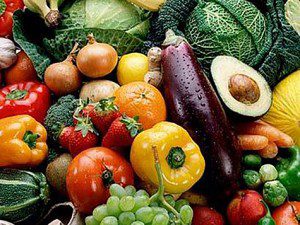By Leanne Beattie – sparkpeople.com
Step into any supermarket these days and you’re sure to find a wide variety of organic foods on the shelves. From produce, milk and meat to breakfast cereals and snack foods, consumers have their pick of certified organic products—a far cry from the time when you could only find organic items in natural foods stores. The demand for organic foods continues to grow. According to the Organic Trade Association, organic food sales have grown about 27.5 billions in 2010. More than half of Americans have tried organic products, and this number is expected to increase as more people become aware of the long-term effects of pesticides and chemicals.
People buy certified organic foods because they believe organics are healthier than conventionally farmed foods. (Read “Why Go Organic” to learn more.) But adding organic foods into your diet can be expensive! Does your whole diet have to be organic or are some conventionally grown foods just as healthy?
Prices for organic foods have dropped in the past five years, but organic items are still generally more expensive than conventionally grown foods.
If you would like to buy organic anyway, here are some tips to make an organic diet more affordable:
- Make a gradual transition over the course of a year to familiarize yourself with prices and products.
- Comparison shop to find the most economical organic items. Within the same city, organic produce prices vary greatly. Sometimes the large supermarket chains will win out, while other times natural food stores (chains or privately-owned) can be more affordable. By shopping around, you’ll get a general idea for which foods are cheaper at certain stores, or which location offers the most deals overall.
- Create your meal plans around the most affordable produce, meat and grain products.
- Improvise recipes if an organic ingredient isn’t available or affordable. You might find something else that works just as well, or even better than the original ingredient.
- Invest in organic meat, cheese and milk (over produce and grains) if your grocery budget is tight. Conventional meat and dairy products often contain hormones and show the highest concentration of pesticides.
- Find local organic growers and buy directly to save money. Farmers markets often offer organic items.
- Select seasonal produce as much as possible. If you want strawberries in winter, for example, buy frozen (or else your pocketbook will suffer). Frozen organic produce is often available at big warehouse stores as well.
- Prioritize your produce. Certain produce items tend to be highly contaminated with pesticides (try to buy these organic), while others tend to be relatively low in pesticide residue (save money and buy these conventional). Here’s the scoop:
The Environmental Working Group (EWG) recently completed an analysis of conventionally-grown (non-organic) produce to measure pesticide residue levels. Based on the results of almost 43,000 tests, EWG estimates that consumers could reduce their pesticide exposure by almost 90 percent if they avoid the most contaminated foods and ate the least contaminated foods instead. Eating the twelve most contaminated fruits and vegetables, referred to as “The Dirty Dozen,” exposes the average person to about 15 different pesticides each day, while someone eating the least contaminated will be exposed to fewer than two pesticides each day. (Download a pocket guide to the Dirty Dozen here.)
If you have budget constraints, your money is doing more for your health when you put it towards organic varieties of the following fruits and vegetables (listed in descending order, starting with greatest levels pesticide contamination):
- Apples
- Celery
- Sweet bell peppers
- Peaches
- Strawberries
- Nectarines (imported)
- Grapes (imported)
- Spinach
- Lettuce
- Cucumbers
- Blueberries (domestic)
- Potatoes
If going totally organic is too difficult or pricey, play it safe and eat the following conventional produce items to minimize your exposure. These are known to have the least amount of pesticide residue (listed in ascending order, starting with of lowest levels of pesticide contamination):
- Onions
- Sweet corn
- Pineapple
- Avocado
- Cabbage
- Sweet peas
- Asparagus
- Mangoes
- Eggplant
- Kiwi
- Cantaloupe (domestic)
- Sweet potatoes
- Grapefruit
- Watermelon
- Mushrooms
When eating conventional foods, be certain to peel away edible skins and outer leaves (such as those on lettuce) as pesticides are often concentrated there. Remember to wash all produce (conventional and organic) thoroughly with a natural fruit and vegetable cleanser. Peeling and washing can help reduce (not eliminate) pesticide exposure, but also results in the loss of valuable vitamins and nutrients (like fiber). When you have the choice between an organic item and one that’s conventionally grown, choose organic as much as possible. To see EWG’s complete study results, and the rankings of 43 different produce items, visit their website, www.FoodNews.org.
Article Source – http://www.sparkpeople.com

If you've ever found value in our articles, we'd greatly appreciate your support by purchasing Mindful Meditation Techniques for Kids - A Practical Guide for Adults to Empower Kids with the Gift of Inner Peace and Resilience for Life.
In the spirit of mindfulness, we encourage you to choose the paperback version. Delve into its pages away from screen glare and notifications, allowing yourself to fully immerse in the transformative practices within. The physical book enriches the learning process and serves as a tangible commitment to mindfulness, easily shared among family and friends.
Over the past few years, Wake Up World has faced significant online censorship, impacting our financial ability to stay online. Instead of soliciting donations, we're exploring win-win solutions with our readers to remain financially viable. Moving into book publishing, we hope to secure ongoing funds to continue our mission. With over 8,500 articles published in the past 13 years, we are committed to keeping our content free and accessible to everyone, without resorting to a paywall.







